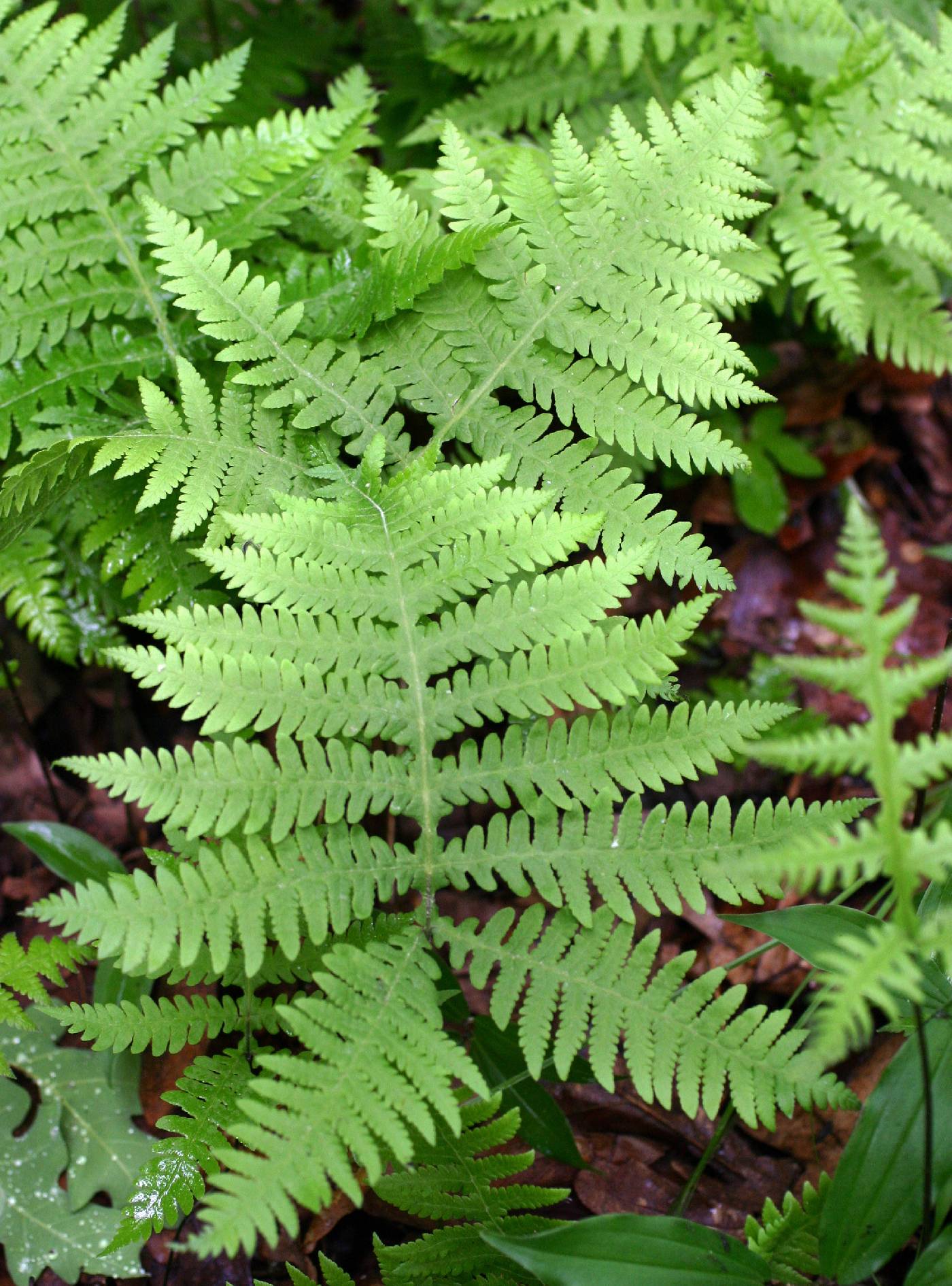- Home
- Search
- Images
- Datasets
- Sample Use
- How to Cite
- Additional Information
- About NEON
- NEON Data Portal
- ASU Biocollections
- About Symbiota
|
Thelypteridaceae |
|
|
Plants terrestrial or on rock [epiphytic]. Stems creeping to erect, scaly at apex. Leaves monomorphic or somewhat dimorphic [dimorphic]. Petiole in cross section with 2 crescent-shaped vascular bundles at base. Blade pinnate to pinnate-pinnatifid, rarely more than 2-pinnate [simple]; rachis grooved adaxially or not, grooves not continuous with grooves of next order. Veins free or anastomosing, running to margin, areoles with or without included free veinlets. Indument of transparent, needlelike, hooked, septate, or stellate hairs, or rarely hairs lacking. Sori inframedial to supramedial, occasionally nearly marginal, round or oblong, rarely elongate along veins; indusia reniform or sometimes absent. Spores bilateral, monolete [rarely globose-tetrahedral and trilete], usually with a prominent, crested, echinate, or reticulate perispore. Gametophytes green, cordate, usually hairy or glandular; antheridia 3-celled. Members of Thelypteridaceae have historically been associated with Dryopteridaceae (in particular, Dryopteris ) but in fact have no close relationship with that family. Thelypteris and allies differ from Dryopteris and allies by their indument of transparent needlelike hairs (versus needlelike hairs absent in Dryopteridaceae); general absence of blade scales (versus blade scales often present); petiole vasculature in cross section with two crescent-shaped bundles (versus many round bundles arranged in an arc, Athyrium and allies exceptional); generally 1-pinnate to pinnate-pinnatifid blades (versus often more divided); veins usually not forking in the ultimate segments (versus often forking); adaxial grooves discontinuous from rachis to costae, or grooves lacking (versus grooves often continuous); and chromosome base numbers from 27--36 (versus generally 40, 41).
PLANT: Perennial herbs with branched or unbranched rhizomes, these scaly, the scales not to somewhat clathrate (“resembling latticework”). ROOTS: adventitious, usually branched. AERIAL STEMS: absent. LEAVES: closely or widely spaced along the rhizome, monomorphic in ours, the vernation circinate. BLADES: variously pinnately compound, usually herbaceous in texture, the pubescence various but at least in part of short bristly needle-like hairs. VENATION: free or anastomosing, commonly with opposing veinlets fusing into 1 or more chevron-like areoles below the sinus between 2 adjacent pinna lobes, the veinlets usually unbranched. SORI on the abaxial leaf surface, surficial, discrete, positioned along the veinlets on either side of the costules, circular in outline in ours. INDUSIA: circular-reniform in ours, pseudopeltate (attached at the notch). PARAPHYSES: absent or if present attached to the sporangial stalks, club-shaped. SPORANGIA: with a stalk usually 3 cells wide, with a vertical ring-like annulus. SPORES: usually 64 per sporangium, monomorphic, monolete, bean-shaped, usually brown. GAMETOPHYTES: surficial, cordate, green, often hairy or glandular, potentially bisexual. NOTES: 1-30 genera, ca. 900 spp., nearly worldwide. Generic delimitation in the Thelypteridaceae has remained controversial, with most American authors lumping all of the species into a single genus, Thelypteris, and most authors working in the Old World splitting the family into about 30 genera. More recently, compromise treatments have been advocated in which 3-6 main groups are recognized as genera. Regrettably, new combinations await publication for many species under these newer classifications. REFERENCES: Yatskievych, G. and M.D. Windham. Vascular Plants of Arizona: Thelypteridaceae. CANOTIA 5 (1): 49-52, 2009. |
|

